During the Sikh struggle for freedom the term “encounter” was often used by the state media, where it would be reported that the security forces killed Sikh militants following a fierce encounter. In reality a large majority of these reported encounters were fake, whereby arrested militants and innocent Sikhs were killed under this pretence. The real encounters in which handfuls of Sikh fighters took on the might of the security forces went unreported by the media, but spread across the state from village to village with tales of the Sikh fighters bravery and courage inspiring others. One such encounter took place in September 1991, where the Sikh fighters under the command of Dasmesh Regiment Chief, Bhai Seetal Singh Mattewal took on 12,000 Indian Armed Forces.
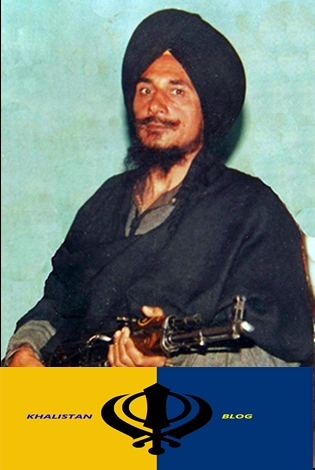
Bhai Seetal Singh Mattewal initially joined the Sikh freedom movement in 1989 as recruit of the Bhindranwale Tigers Force of Khalistan (BTFK) led by Baba Gurbachan Singh Manochahal, with whom they remained close to till their Shaheedi. As they met further likeminded and dedicated Sikh youth who had sworn to defend the Sikh Panth and Punjab from invading forces, they formed the Khalistan Armed Force, which was later renamed to Dasmesh Regiment in order to avoid confusion with another group carrying the same name. The Dasmesh Regiment, BTFK (Baba Manochahal group), KCF (Gurjant Singh Rajhastani group) and SSF (Dr Gurnam Singh Buttar group) worked together under the Baba Manochahal led Panthic Committee.
Bhai Seetal Singh Mattewal always wished to face the enemy head on, and would often tell those around him “My encounters with the police should not take place where innocent people may get hurt, they should take place in empty lands where I can show the forces of Delhi what a real encounter feels like“.
During the 1980’s, patrolling vehicles of the Indian Security Forces were being destroyed by the militants, and many regions of Punjab were becoming inaccessible to the security forces. The Hindustan government was afraid that Punjab was fast slipping away from their grip and into the hands of the Sikh fighters. The state Govt utilised various methods in order to discredit the movement. Gangs of thieves and murderers dressed like Sikh freedom fighters were sent into villages to commit horrendous crimes against innocent villagers. In addition to this, criminals were sent to infiltrate the Sikh freedom fighting groups to spread misinformation and cause internal rivalry.
Due to such misinformation, a clash took place between the groups of Bhai Seetal Singh Mattewal and Bhai Sukhwinder Singh ‘Pappu Gora’. During this firefight between brothers, rumors began to spread throughout Punjab that the General of Dasmesh Regiment, Bhai Seetal Singh Mattewal was fatally injured.
These reports spread like wildfire throughout the state and reached Delhi where a large meeting was called consisting of many high-ranking Police and Army personnel. During the meeting it was decided that this opportunity should not be missed to capture or kill Bhai Seetal Singh and his group who had been causing mass casualties for the security forces. A huge force consisting of soldiers from the Army, the Central Reserve Police Force, the National Guard and the Border Security Force were deployed to the location. This operation sanctioned by the Indian Government was given the name “Vadi Padhar”.
As the armored vehicles and trucks of the Indian Army began to appear, the local villagers rushed to meet with Bhai Seetal Singh to inform them of the security force movements. They requested that Bhai Seetal Singh and his group escape to safety to avoid capture. However Bhai Seetal Singh who always wished for such opportunities to take on the security forces, was not happy to leave the battlefield. Instead Bhai Seetal Singh and his group performed Ardaas and prepared themselves for battle.
The Singhs picked up their weapons and began walking away from the main village to a nearby open field. The villagers were left puzzled by this, and asked the Singhs what they were doing. Bhai Seetal Singh explained to the villagers that they were separating themselves from the villagers, as the Indian Armed Forces would begin shooting anyone who resembles a Sikh as soon as they arrive, and later claim the innocents were militants, just as they have done time and time again in the past.
Bhai Seetal Singh knew their decision to leave the village would mean a lack of food, provisions, safety and cover but felt it necessary in order to protect the innocents. With smiles on their faces, the Singh’s left the village and prepared their weapons for what was to come.
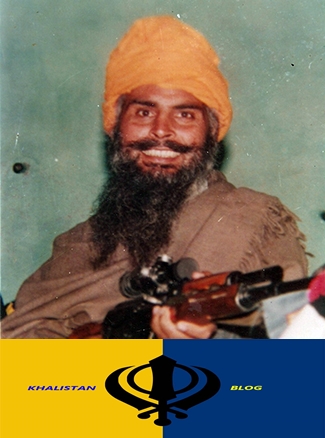
As these discussions were taking place, the Indian Armed Forces made advances in attempts to capture the open lions. On the September 11, 1991 the armored vehicle units of the Indian army reached the outskirts of the fields in which the Singhs had been living for the past few days. Bhai Tarsem Singh Mattewal, Bhai Gurdial Singh, Bhai Gurmukh Singh ‘Bagga’ and Bhai Gurnam Singh stood alongside their General, Bhai Seetal Singh Mattewal as they embraced one another and readied themselves for their journey (Shaheedi) which would lead them to the feet of their Guru.
On that particular morning the Singhs were in the fields of Ballowali village. They were sat in the fields next to the motor owned by Sardar Santokh Singh. 14 hours had passed since their last meal. At 9am as the Singhs were testing their weapons, the daughter of Sardar Santokh Singh arrived with food for the Singhs. The Singhs expressed their gratitude to their sister who took great risk in coming to them. Putting their weapons aside, the Singhs did Ardaas to thank Guru Sahib for the food they were about to eat.
The Ardaas had just finished, when the girl glanced over the fields of oranges and spotted several armored vehicles and jeeps with mounted machine guns coming their way. The Singhs noticed the look on their sister’s face and immediately knew something was wrong. Before eating a morsel of food the Singhs stood up and witnessed the same scene. Realizing that the Indian Armed Forces would be within shooting distance soon; they told their sister to return to her house, leaving their food untouched they prepared their weapons once again.
As Sardar Santokh Singh’s daughter was running through the fields back to her home, she was caught by Indian Army soldiers who began to question her. The shameless soldiers continued to harass the girl, which could not at all be tolerated by the Singhs. As a result of this, a hail of bullets began to rain upon the security forces. Spotting their fellow soldiers drop to the ground, the soldiers released the girl and retreated in fear for their lives.
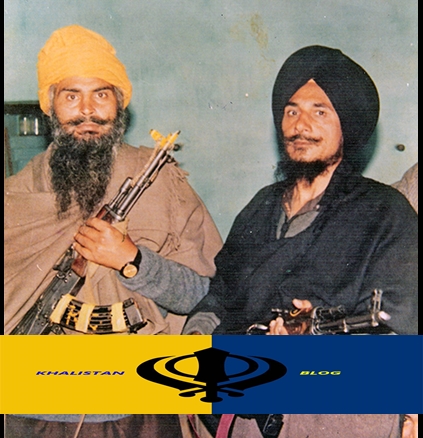
The commanders of the Indian Army recognized the sound of Bhai Seetal Singh’s famous Dragunov Sniper Rifle and immediately contacted their superiors to inform them that they had located Bhai Seetal Singh Mattewal and would require reinforcements due to coming under very heavy fire. On hearing of this update, the officials in Delhi began to celebrate the fact that they had closed in on Bhai Seetal Singh. The quickly sanctioned the deployment of more forces and armored vehicles, which were sent to Ballowali in an effort to turn the tide.
By now, hundreds of soldiers had fallen at the hands of these five Singhs who remained unharmed. The forces had pinpointed the Singhs location and encircled them, having surrounded them from all directions bullets were coming at the Singhs from all directions. This however did not dishearten the lions of Guru Gobind Singh Ji, instead they began to smile even more as they saw it as Shaheedi closing in on them. In fact before the battle began to rage, the Singhs did bhangra and made many jokes about how they were preparing for their marriage to death. For these lions there was no fear of death, as they had sworn their lives for the Panth and their mission. It didn’t matter if death came today or tomorrow, they were ready to embrace it.
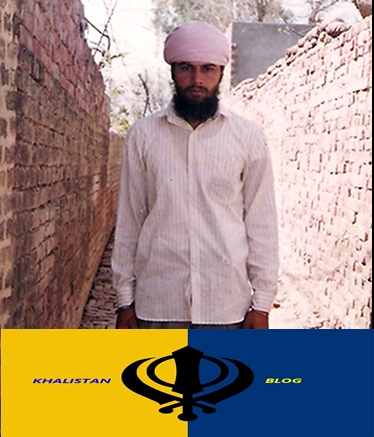
Bhai Gurmukh Singh ‘Bagga’ would often say, in a joking manner to his brothers, “Saade Naal Muqable Vich Dushmana Nu Gambeer Sitte Bhugtne Penge” (The enemy will suffer dire consequences should they come face to face with us). Bhai Gurmukh Singh repeated this phrase so often that his brothers in arms began to call him, “Gambeer Sitta”.
Is it important to note, that during this particular battle the Dasmesh Regiment Singhs had one Dragunov rifle, one GPMG, and three AK47’s between them. With these limited weapons and ammunition the five battle hungry Singhs of Guru Gobind Singh Ji took on the combined might of the Indian Armed Forces which was estimated to be over 12,000 men.
Villagers who witnessed this unique battle recalled that when Bhai Seetal Singh Mattewal pressed the trigger on his Dragunov rifle all that would remain were bodies of security forces, whose blood painted the fields red. Hour after hour ambulance sirens could be heard taking the dead and injured back to the city hospital. After a while the security forces began to think their intelligence was incorrect and that they may well be outnumbered and outgunned. They could not have imagined that it was only 5 Singhs who were holding their position and pushing them back towards Delhi.
In order to save their soldiers from what had become a killing ground, the commanders of the Indian Army ordered their troops to fall back and take defensive positions under the cover of fields, which were over 7 feet high. As the Singh’s saw the soldiers retreating they decided to go on the offensive. One by one they would make their way into the fields in which the soldiers had taken cover. As they caught sight of the troops, they would let out a burst of fire whilst bellowing Jaikaras. After eliminating a dozen soldiers in this manner, they would return to their position.
The Dasmesh Regiment Singhs stopped firing for some time, and after thousands of bullets had been spent by the Indian Armed Forces without return, they began to think that the Singh’s had either been eliminated or injured. A loudspeaker system was brought on to the battlefield. The chief commander of the Indian Armed Forces then began to speak. In his announcement he asked the Singhs to lay down their weapons and surrender. As the announcement was being made, the Singhs increased the intensity of their fire and repeated this each time an announcement was made.
The Commanders of the Armed Forces then authorized the use of mortar shells and bombs, which began to be dropped on where they believed the Singh’s were positioned. Despite the use of numerous bombs, the Singhs kept returning fire. The security forces who were ordered to take up offensive positions refused to do so. They told their commanding officers that as soon as they stepped foot on to the battlefield, they would be shot down like many of their fallen comrades.
The Commanders who had fought in many battles and had undergone intense training in warfare were also left confused and shocked that despite the such heavy bombardment the Singh’s continued to rain down bullets on them and continued to eliminate more of their men. After several meetings and discussions, the officers came to the conclusion that the Singh’s must have underground bunkers in which they were hiding in as the bombardment was taking place.
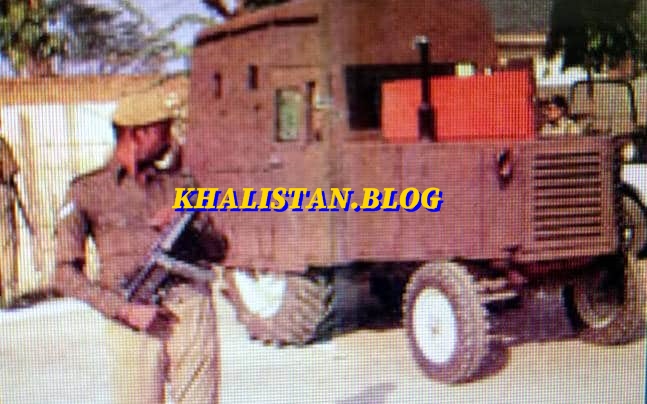
When the bombardment failed, bulletproof tractors were brought in. The forces used the bulletproof tractors to slowly advance toward the Singh’s but such was the accuracy of the Singh’s firing, Bhai Seetal Singh Mattewal managed to blew open the tractors doors by shooting off the hinges. The driver exposed to the firing was shot dead and CRPF officer in-charge SS Yadav was seriously injured as the tractor crashed into the sugarcane fields. Bhai Seetal Singh managed to neutralize three other so-called bulletproof tractors which came under such heavy fire from the Singhs that some of them caught fire and exploded.
As the fields were being painted red with the blood of Indian Armed Forces, the sun began to set and darkness spread with only flickers of light coming from firing of bullets which cut through the air. The Indian Armed Forces were completely lost and shot aimlessly in every direction with no success. Meanwhile the Singhs were still managing to shoot down anyone who dared to advance on to the battlefield. The security forces even resorted to using chemical bombs in order to flush out the Singhs but to no avail.
With little success and only damaging reports being relayed to Delhi, the The Indian Government was becoming increasingly frustrated at the army’s inability to crush the resistance of what they believed was a group of around a hundred Dasmesh Regiment fighters. The government had placed all its resources in Northern India at the disposal of the Commanders in-charge of this ‘anti terrorism operation’, yet with their collective might they could not make any advance on the Singhs position.
As the news spread across Punjab of the fierce encounter taking place, reports reached other Jujharoo Singhs camped in the region. These Singhs also prepared their weapons and headed in the direction of the battlefield to fight alongside their brothers.
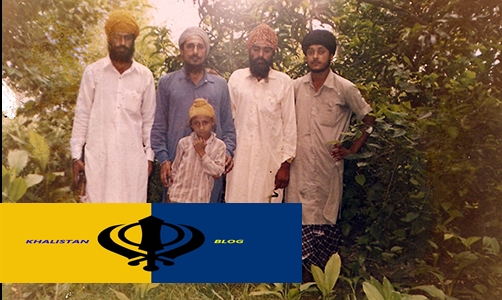
The Dasmesh Regiment unit of Bhai Kulwant Singh and the Bhindranwale Tigers Force unit of Bhai Hardev Singh Kalia and Bhai Balwinder Singh Shahpur surrounded the same Indian forces who had encircled the 5 lions of Dasmesh Regiment. In this way the battle began to rage on four separate fronts, with Indian forces dropping to the floor under the constant fire of the Jujharoo’s bullets. As this was happening BTFK General, Baba Gurbachan Singh Manochahal arrived at the village Udhoke and joined the Singhs in all out war.
Bhai Sukhwinder Singh ‘Pappu Gora’ who earlier had a standoff with Bhai Seetal Singh Mattewal’s group also returned with his group and joined the battle. Upon seeing Bhai Sukhwinder Singh return to help his brother the local villager’s spirits began to soar with love and pride.
With the incoming reinforcements from the Sikhs fighters, the Indian Generals feared that their losses would multiply and also became worried that the local villagers may join the Jhujaroo Singhs. To prevent this, they began spreading reports that Bhai Seetal Singh Mattewal and his group had successfully escaped.
As morning broke, the stench of blood and death filled the air. The Indian Commanders began to evaluate their losses following the devastating results of exchanging bullets with the Sikh Freedom Fighters. The once green fields had turned red with the blood of the Indian forces.
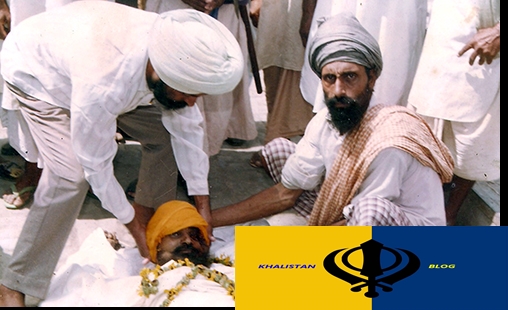
The operation commanders who were in constant communication with Delhi, began demanding the supply and use of Vijayanta tanks in addition to other armored reinforcement units. As the sun rose, the cover of darkness deserted the Singhs and the Indian machine guns began to spray so many bullets into the air that it looked like a dark cloud had descended on Bhai Tarsem Singh, Bhai Gurdial Singh and Bhai Gurmukh Singh. Without any fear these brave soldiers of the Khalsa army battled on until their final breathes.
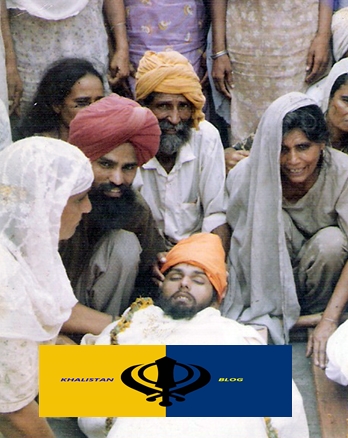
As Bhai Seetal Singh Mattewal witnessed his brothers in arms kiss the noose of death, he stopped firing his Dragunov rifle. Bhai Seetal Singh decided to wait for the Indian Forces to come and pick up their dead and injured. Meanwhile, Bhai Seetal Singh and Bhai Gurnam Singh sat in the fields where they did their final Ardaas. They knew the end was near but remained in high spirits. When the Singhs finished their Ardaas, they bellowed Jaikaras and made their final stand.
The Indian forces also aimed their fire in the direction of the Singhs and brought forward their bulletproof tractors onto the field for further protection. Upon seeing the tractor approaching, Bhai Gurnam Singh, who was badly injured, ran out of the fields and let loose with his AK47 rifle. Upon seeing Bhai Gurnam Singh make his final stand, even the commanders of the Indian Forces were left stood in awe. Eventually Bhai Gurnam Singh ran out of bullets, but such was the fear in the hearts and minds of the Indian forces, they were reluctant in approaching the open lion stood in the middle of the field. Once convinced that Bhai Gurnam Singh was completely out of ammunition, the forces mustered the courage to apprehend him.
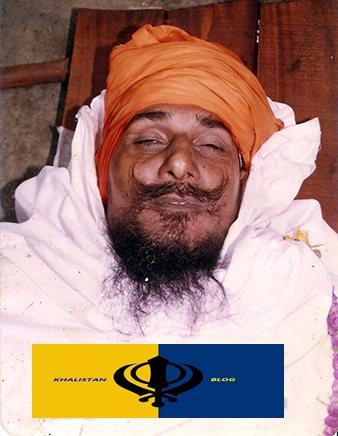
Bhai Seetal Singh Mattewal was also preparing to make his last stand. With just a handful of ammunition remaining and in an injured state, he waited for the forces to approach him. The Indian Forces stooped to such levels that they used Bhai Gurnam Singh as a human shield as they approached Bhai Seetal Singh to deter incoming fire from Bhai Seetal Singh and further loss to their own forces. Bhai Seetal Singh still managed to accurately eliminate some of the forces advancing toward him until finally his bullets ran out. With the bullets of the enemy continuing to be fired in his direction, Bhai Seetal Singh roared “Khalistan Zindabaad!!” one final time, before attaining the ultimate reward for a warrior – Shaheedi.
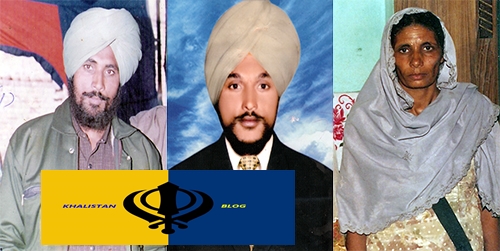
Following the iconic battle of Ballowal, in which thousands of security forces were killed or injured, the security forces harassed the family of Bhai Seetal Singh Mattewal. Bhai Sahib’s home was constantly raided, and Bhai Sahib’s wife, Bibi Narinder Kaur and two younger brothers, Bhai Amrik Singh and Bhai Darshan Singh were beaten and detained at a local detention center, where only Guru Sahib knows what they had to endure, as they were never seen again. Bhai Seetal Singh’s two young sons were raised by his younger brother’s widow.

You must log in to post a comment.